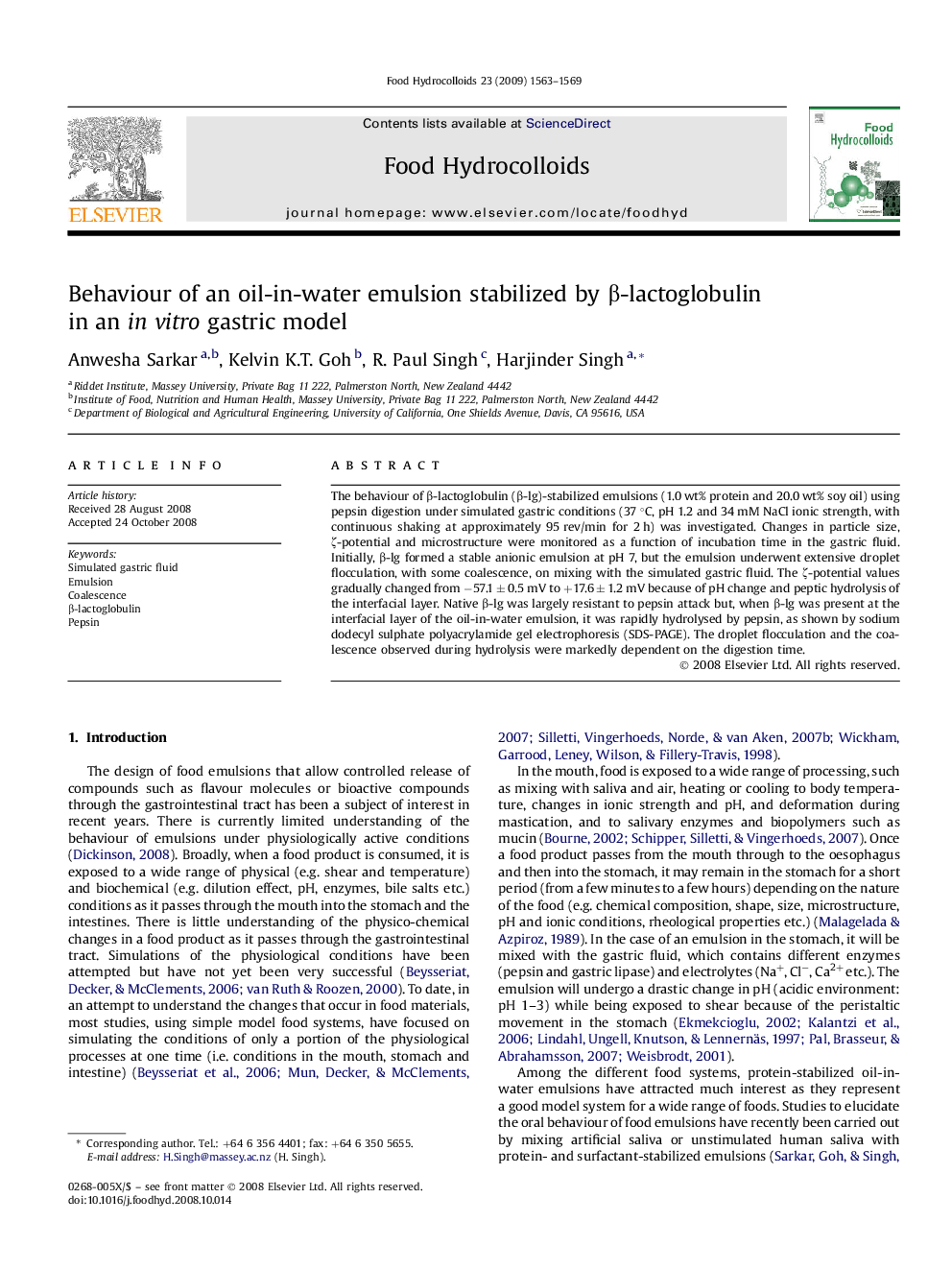| Article ID | Journal | Published Year | Pages | File Type |
|---|---|---|---|---|
| 604824 | Food Hydrocolloids | 2009 | 7 Pages |
Abstract
The behaviour of β-lactoglobulin (β-lg)-stabilized emulsions (1.0 wt% protein and 20.0 wt% soy oil) using pepsin digestion under simulated gastric conditions (37 °C, pH 1.2 and 34 mM NaCl ionic strength, with continuous shaking at approximately 95 rev/min for 2 h) was investigated. Changes in particle size, ζ-potential and microstructure were monitored as a function of incubation time in the gastric fluid. Initially, β-lg formed a stable anionic emulsion at pH 7, but the emulsion underwent extensive droplet flocculation, with some coalescence, on mixing with the simulated gastric fluid. The ζ-potential values gradually changed from â57.1 ± 0.5 mV to +17.6 ± 1.2 mV because of pH change and peptic hydrolysis of the interfacial layer. Native β-lg was largely resistant to pepsin attack but, when β-lg was present at the interfacial layer of the oil-in-water emulsion, it was rapidly hydrolysed by pepsin, as shown by sodium dodecyl sulphate polyacrylamide gel electrophoresis (SDS-PAGE). The droplet flocculation and the coalescence observed during hydrolysis were markedly dependent on the digestion time.
Related Topics
Physical Sciences and Engineering
Chemical Engineering
Colloid and Surface Chemistry
Authors
Anwesha Sarkar, Kelvin K.T. Goh, R. Paul Singh, Harjinder Singh,
